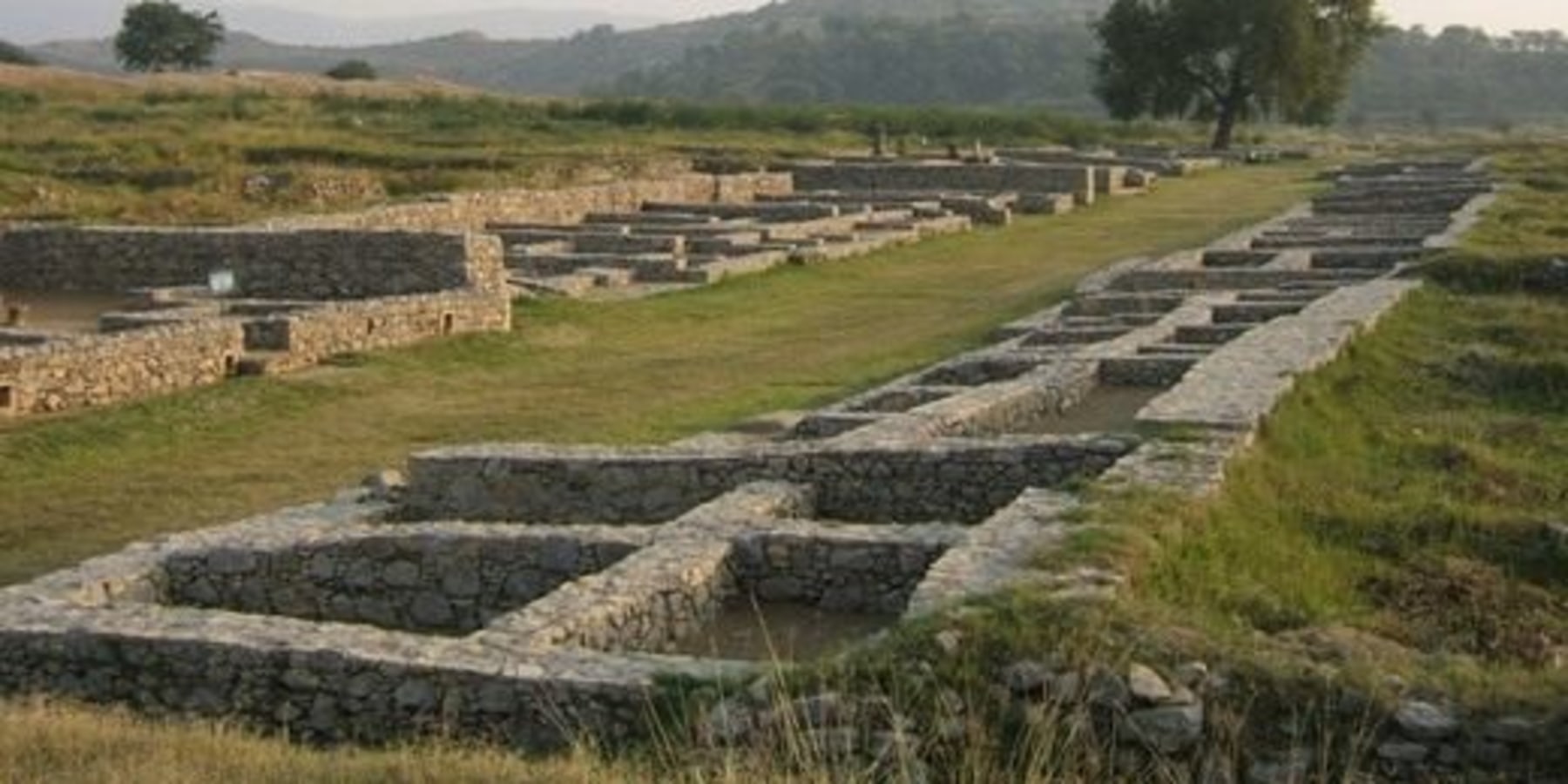
That Taxila was very famous, can be deduced from the fact that it is mentioned in several languages: in Sanskrit, the city was called Takshaçila, which may be interpreted as "prince of the serpent tribe"; in Pâli it was known as Takkasilâ; the Greeks knew the town as Taxila (Ταξίλα), which the Romans rendered as Taxila; the Chinese called it Chu Ch'a-shi-lo. The ruins are some 30 kilometres northwest of modern Islamabad.
Early History
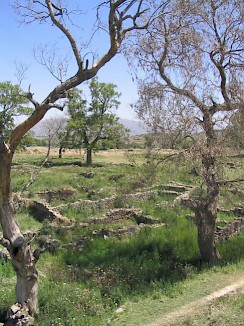
Taxila was founded in the seventh or sixth century BCE, according to the legend by a son of the brother of the legendary hero Rama. The first town was situated on a hill that commanded the river Tamra Nala, a tributary of the Indus. It was an important cultural center, and it is said that the Mahabharata was first recited at Taxila. This site is currently called Bhir. The residential area was in the east; the western part of the town seems to have had a ceremonial function. If the "Pillared hall" was indeed a sanctuary maintained by several archaeologists, it is the oldest known Hindu shrine.
Mauryas
Alexander died on 11 June 323, in far-away Babylon. Immediately, the veterans in the eastern satrapies decided to fight themselves a way back to Greece. They were defeated by an army commanded by Peithon, the newly appointed satrap of Media. For the time being, all remained quiet in the east, but many Europeans had died, and the grip of the survivors on the eastern periphery, which had never been very firm, became very weak indeed. In 316, king Chandragupta of the Mauryan dynasty of Magadha (321-297) could conquer the Indus valley. Taxila lost its independence and became a provincial capital.
Bindusara succeeded Chandragupta. His son Ashoka was governor of Taxila until 269 when he succeeded his father. Ashoka became famous for his religious policy: he stimulated Buddhism wherever possible. At Taxila, the existing monastery, situated on the other bank of the river, was abandoned. Two new monasteries were built to the east. The Dharmarajika monastery, where Ashoka buried several relics of Buddha, is still famous for its stupa.
Indo-Greeks
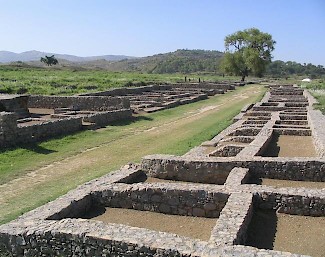
In 184, the Greeks, who had maintained a kingdom in Bactria, invaded Gandara and Punjab again. From now on, a Greek king was living in Taxila. His name was Demetrius. The town was rebuilt on the plains on the other bank. According to the Hippodamian Plan, this second Taxila, now called the Sirkap ("severed head"), was built according to Greek fashion, like a gridiron. The largest sanctuary, now called "apsidal temple", measured 70x40 meters. The Sun temple and a sanctuary known as "shrine of the double-headed eagles" are near the apsidal temple.
Demetrius' kingdom consisted of Gandara, Arachosia, Punjab and a part of the Ganges valley. It was a multi-ethnic society, in which Greeks, Bactrians, western Iranians and Indians lived together. Greek religious practices, Iranian cults, Hinduism, Jainism, and Buddhism, are all known from second-century Taxila. For example, there was a Zoroastrian sanctuary at Jandial, directly north of Sirkap, while the city itself boasted all kinds of sanctuaries.
Sacae
After 110 BCE, Punjab was gradually taken over by the Sacae. This is a common name for the nomad tribes of Central Asia, who always tried to invade their south territories, such as Bactria. They had been kept away since the age of king Cyrus the Great, but had ravaged the Graeco-Bactrian kingdom in c.130 and had finally settled in Drangiana, which was henceforth called Sacastane of Sistan. At the beginning of the first century BCE, they launched raids on Gandara and infiltrated in the southern Indus valley and settled in Taxila.
Parthians
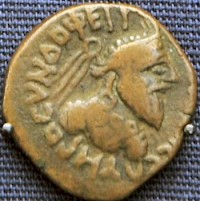
In the second half of the first century BCE, the Parthians became interested in the region and started to take over the Greek petty kingdoms of Gandara and Punjab. One of the Parthian leaders, living in Taxila, was named Gondophares. According to an old and wide-spread Christian tradition, he was baptised by the apostle Thomas. Although the story is implausible - Gondophares was king before Jesus was born - it documents that adherents of several religions lived together in Gandara and Punjab. There may indeed have been an audience representing a new Jewish sect, even when Gondophares died before Thomas was born.
Another visitor was a Greek philosopher named Apollonius of Tyana. A description of Taxila can be found in the Life of Apollonius of Tyana by the Greek author Philostratus. In section 2.20 he writes that the town is as big as Nineveh and was fortified like the Greek cities.
While Apollonius was engaged in this conversation, messengers and an interpreter presented themselves from the king to say that the king would make him his guest for three days because the laws did not allow strangers to reside in the city a long time. Accordingly, they conducted him into the palace. I have already described how the city is walled. Still, they say that it was divided up into narrow streets in the same irregular manner as in Athens and that the houses were built so that if you look at them from outside, they had only one story. At the same time, if you went into one of them, you at once found subterranean chambers extending as far below the level of the earth as did the chambers above.
Kushans
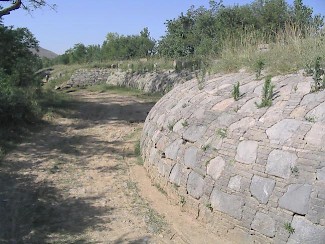
The city was badly damaged when the Huns invaded Punjab in the fifth century and never recovered.
Overall, the city's historical significance has no impact on the lives of the area's people. There are no ruminants of the Buddhist culture in the lives of the natives of Taxila. Their lives are dictated primarily by the Punjabi culture on the individual personal front and their lives in a social capacity.

